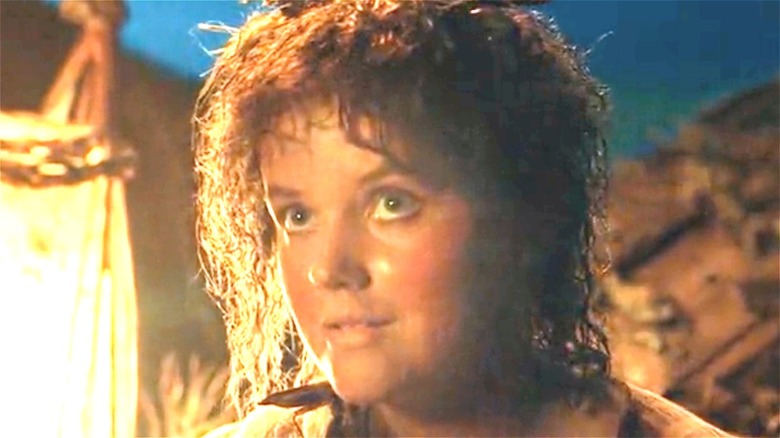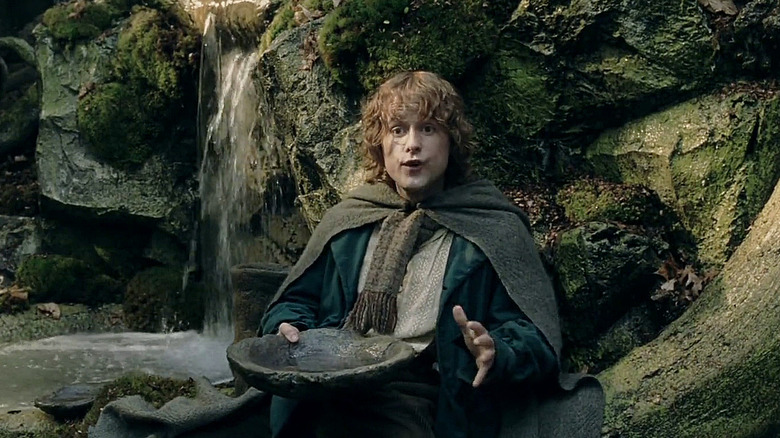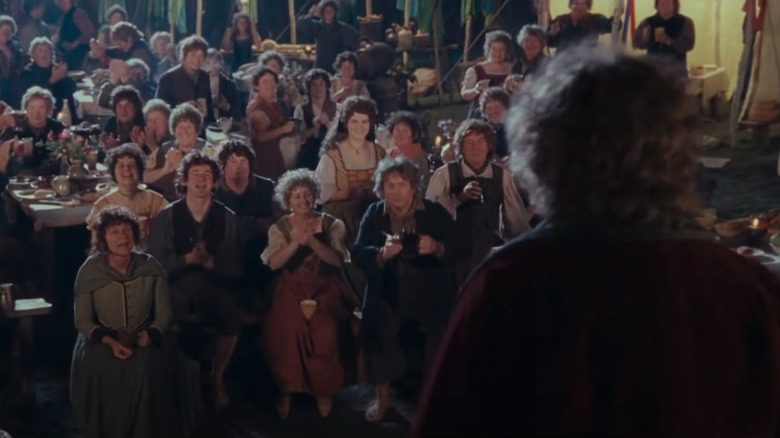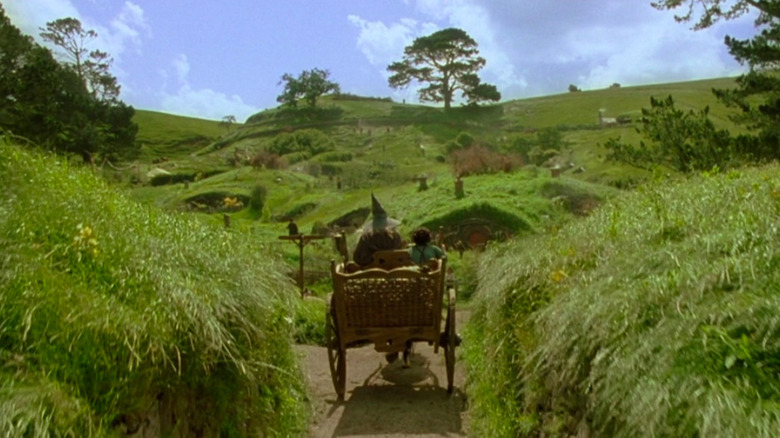Lord Of The Rings: The Rings Of Power's Harfoots Explained
The team behind Amazon's "The Lord of the Rings: The Rings of Power" series have already admitted that, for all of their respect for Tolkien's works, there are going to be at least some changes in the show.
In a behind-the-scenes report from Vanity Fair, showrunner Patrick McKay explained that, "One of the very specific things the texts say is that hobbits never did anything historic or noteworthy before the Third Age. But really, does it feel like Middle-earth if you don't have hobbits or something like hobbits in it?"
This desire to connect the content to "The Lord of the Rings" and "The Hobbit" through the relatable eyes of the Little People has led the production crew to focus on a different group of Halflings or "proto-Hobbits" called Harfoots. This earlier iteration of the Little People figures strongly in the Rings of Power trailer. While it isn't definitively stated, the narrator, a rustic-looking young character played by Markella Kavenagh, appears to be a young Harfoot girl dreaming of a world spend wandering but never lost. The small hand at the end of the clip very well may also be a Halfling. What's more, it may even be Kavenagh's character who is shown reaching out to the fiery, mostly-naked man halfway through the trailer.
With Harfoots apparently set to play a hefty role in the series, we decided to dig into the source material to come up with some answers about who these people are and how they're different from the Hobbits that we've all come to know and love.
Harfoots live much earlier than Hobbits
The earlier exploits of Hobbits and their ancestors are so unremarkable that, in the prologue to "The Fellowship of the Ring," it literally states that "Of their original home the Hobbits in Bilbo's time preserved no knowledge." Hobbit history is only officially recorded after they settle down in the Shire halfway through the Third Age.
The appendix to "The Return of the King" confirms that 1050 years into the Third Age, Halflings are first mentioned in recorded history. The first group to get a mention in the annals is the Harfoots, who are seen as trailblazers, pushing westward into the area where the Shire would later be located. While this is interesting, though, we have to remember that it's all happening thousands of years after many of the events of the "Rings of Power" plot. Before this migration, nothing is known about Hobbits or Harfoots.
This leaves a blank canvas, and it's one that Amazon Studios isn't hesitating to fill. We don't know anything about Second Age Hobbits — or even earlier Third Age Hobbits, for that matter — from the source material. They're literally nonexistent in the text, although they clearly originate at some point, probably from the northeastern portion of the continent, since that would match their migration patterns later on (more on that in a minute.) All that said, they have to start somewhere, and connecting this much earlier version of the Little People to a wandering sub-group of the species seems like a good place to start.
Harfoots are similar but different to Hobbits in appearance
When it comes to how Harfoots look, act, and interact with others, we have a little bit more to go on. The prologue to "The Fellowship of the Ring" explains how Harfoots are different from Hobbits by stating that by the early Third Age, "the Hobbits had already become divided into three somewhat different breeds: Harfoots, Stoors, and Fallohides."
It goes on to detail the appearance and inclinations of each group. When it breaks down Harfoots, they're described as "browner of skin, smaller, and shorter, and they were beardless and bootless; their hands and feet were neat and nimble; and they preferred highlands and hillsides." A bit later it explains that the Harfoots are "the most normal and representative variety of Hobbits, and far the most numerous." It also says that they're the ones who maintain the habit of living underground and that they regularly interact with the Dwarves.
In fact, when King Théoden first meets Merry and Pippin in "The Two Towers," he tells them of the old legends that his people have of the Halflings from their original homeland, where "live the halfling folk that dwell in holes in sand-dunes. But there are no legends of their deeds, for it is said that they do little, and avoid the sight of men, being able to vanish in a twinkling..." Again, very little to go on, especially since it's still all Third Age content.
Harfoots don't live in the Shire
We have to officially point out that Harfoots don't live in the Shire — and unless Amazon decides to extend the story thousands of years into the Third Age, they won't be there at any later point during the show, either. Hobbits don't arrive in the Shire until after centuries of migrating across Middle-earth — a period that they refer to later on as the "Wandering Days."
In fact, in the prologue to "The Fellowship of the Ring," we get a brief glimpse into how Hobbits came to be where they are during "The Lord of the Rings." It explains that "like many other folk Hobbits had in the distant past moved westward." This pattern is consistent with their Mannish relatives as well as the Elves.
The prologue adds that the Halflings seem to have moved west for a couple of different reasons. First, Men had been multiplying in their land and pushing the Little People to seek greener pastures. Second, by the Third Age, a shadow had fallen on Mirkwood, a threat that would eventually be connected to Sauron himself. While these circumstances won't be the same during the timeline of the "Rings of Power," chances are we'll see the Harfoots at some point in their long migratory history away in the East of Middle-earth.
While Harfoots are a little-known part of Middle-earth lore, there's just enough to go on for Amazon to reasonably integrate them into their story. However, it's comforting to know that the showrunners are aware of the unimportant role that they play during this age. This is an era for Men, Elves, and Dwarves to shine.



